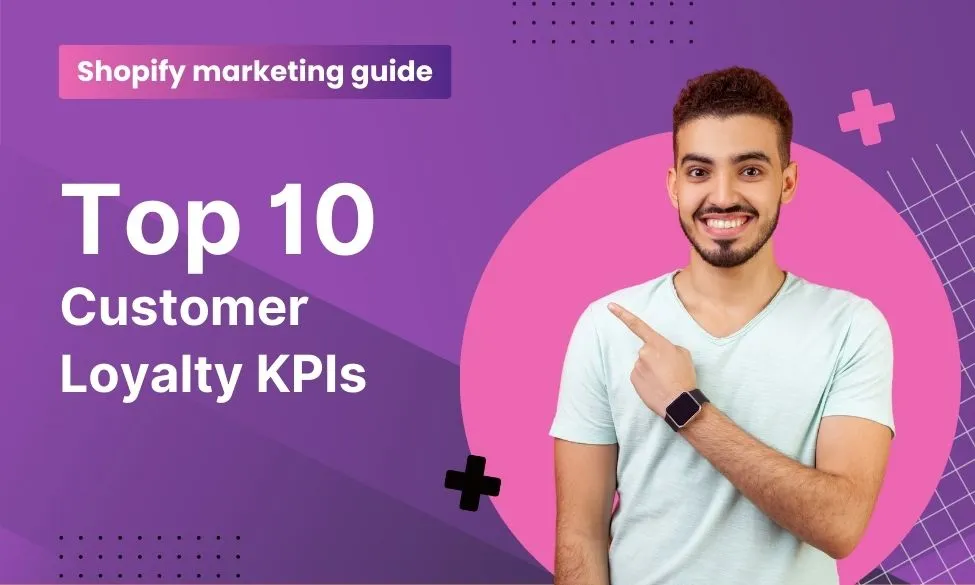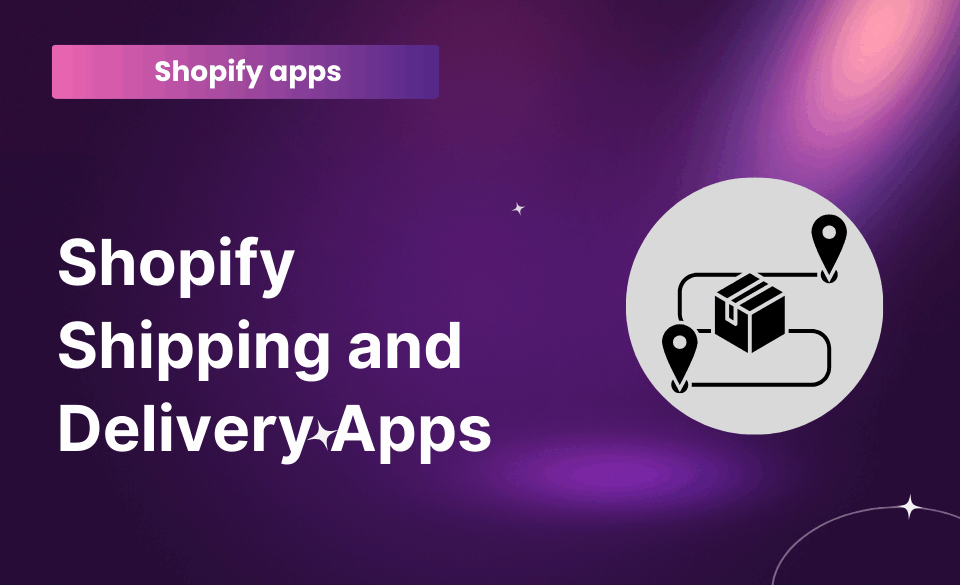
How Much Does a Shopify Loyalty Program Cost? (2024)
24 May, 2024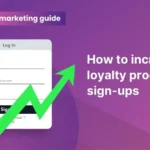
17 Proven Techniques to Increase Loyalty Program Sign-Ups
30 May, 2024Customer loyalty KPIs are essential in the cutthroat world of online retail to help you stand out from the crowd and boost your bottom line. But do you know how to track loyalty program performance?
No worries—this detailed article covers the top 10 loyalty program measures for e-commerce business owners of any expertise.
The Importance Of Measuring Loyalty Program Success
Customer loyalty KPIs extend beyond enrollment numbers, even if many sign-ups are a fantastic place to start.
KPIs for customer trust show how well a program meets the company’s goals (e.g., increased sales and customer retention). If you keep track of KPIs for your rewards program, you can see if it keeps customers returning to your business.
10 Key Performance Indicators (KPIs) To Track Loyalty Program Success
Here are ten essential KPIs for measuring loyalty program success for tracking loyalty program success:
1. Customer Acquisition Cost (CAC)
To see how much it costs to acquire and maintain consumers, one helpful metric is the Customer Acquisition Cost (CAC).
It’s simple to figure out your CAC. The formula looks like this:
| Customer Acquisition Cost = Total Marketing & Sales Spend / Total New Of Customers |

You can find detailed calculation methods in this blog.
On average, top SaaS companies spend $712 on acquiring customers. That’s why knowing your CAC enables you to make better decisions about your customer acquisition approach.
This way, budget, and resources are guaranteed to go to the channels that get the best results (high-performing channels).
2. Customer Lifetime Value (CLV)
The customer Lifetime Value (CLV) is an important indicator that assesses how much money a customer may earn throughout their engagement with your firm.
Are you wondering how to calculate customer lifetime value for your loyalty program? Here’s a simple formula to get you started:
| CLV = Average Transaction Size x Differ of Transaction x Retention Period |
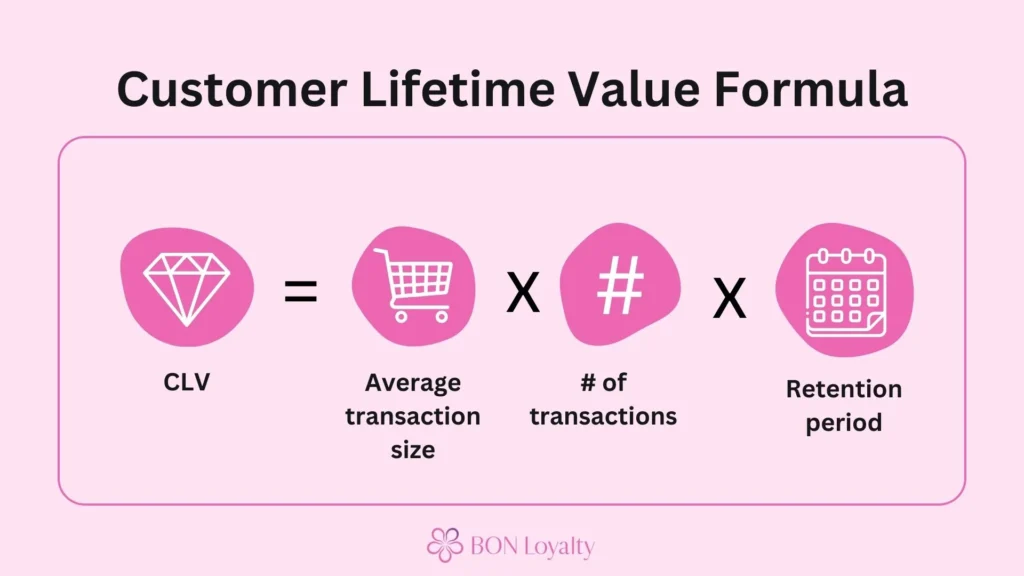
Here are two important factors:
- Average Customer Value (ACV): The average revenue a customer generates over the course of a year.
- The average customer lifespan (ACLS) is the amount of time a customer is engaged in your brand, which might be months or years.
3. Customer Lifetime Value (CLV) To Customer Acquisition Cost (CAC) Ratio
The CLV to CAC ratio determines if the annual revenue you get from a customer is more or less than the sales and marketing costs needed to acquire them.
The image below is the calculation formula of CLV To CAC:
| CLV to CAC ratio = ((Average Revenue Per Account x Gross Margin) / Churn Rate) / Customer Acquisition Cost |

So, what’s a “good” CLV to CAC ratio?
As a general guideline, a CLV to CAC ratio of 3:1 is considered healthy. This means you may anticipate $3 in lifetime revenue for every $1 you spend on a consumer.
However, there is no one-size-fits-all solution since the appropriate CLV to CAC ratio differs by industry.
For example, you may change your advertising to get more sales and a higher customer term value by using personalized deals, reward programs, and great customer service. It might cause the CLV:CAC ratio to go up.
However, a firm offering daily goods may have a lower CAC since getting customers to buy a simple t-shirt is cheap.
4. Program Enrollment Rate
The Program Enrollment Rate measures how many customers join your reward program. It reveals how attractive your program is to your target audience.
| Enrollment Rate = (New Sign-ups / Total Customers) * 100 |

Here’s a deeper look at loyalty enrollment rates across several industry benchmarks based on data from Adobe Experience Cloud:
Travel & Hospitality has the highest loyalty rate, with 67% of visitors enrolling in reward programs.
Retail has the lowest loyalty rate (53%) but high program participation.
Consumer products have 59% moderate loyalty but the lowest program participation.
This is because they mostly sell via shops and seldom have their loyalty programs. Because of familiarity and ease, brands that fulfill their needs have a higher loyalty rate than retail.
5. Repeat Purchase Rate (RPR)
The repeat purchase rate is an important customer loyalty KPI. It measures the percentage of customers who return to make a second buy within a specific timeframe.
The formula for calculating your repeat purchase rate is as follows:
| Repeat Purchase Rate = Repeat Customers / Total Buying Customers |
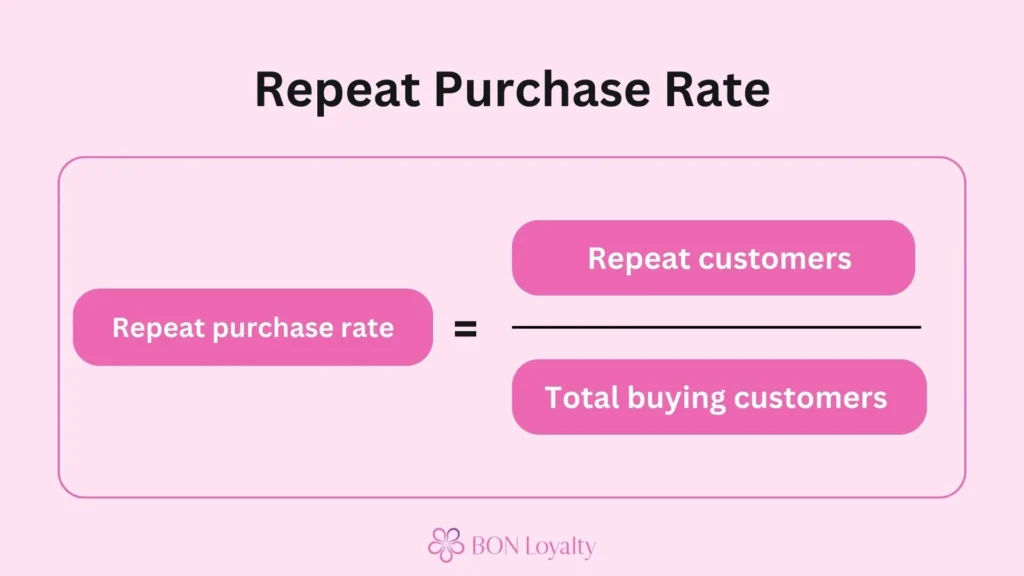
A high proportion of repeat purchases indicates that your consumers trust and value your brand. For every e-commerce organization, this translates into consistent revenue and cheaper acquisition expenses.
6. Purchase Frequency (PF)
Purchase frequency (PF) is useful for providing insight into your consumers’ purchasing behavior. It informs you how often a consumer purchases from your e-commerce site during a certain time.
Here’s the formula:
| PF = Total number of orders / Total number of unique customers |
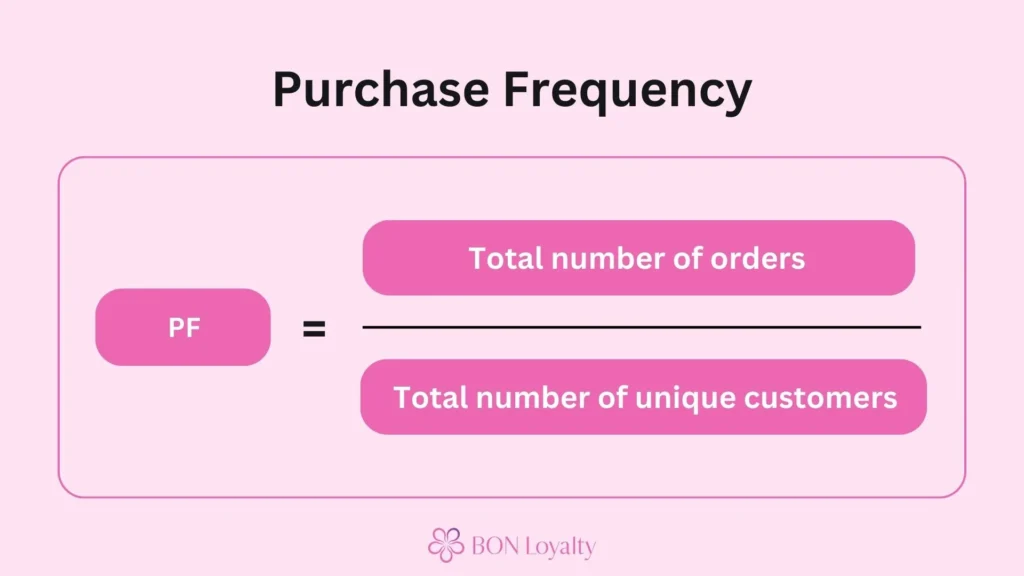
Keeping an eye on how often people buy from you can tell you a lot about their trust and help you find ways to improve.
7. Customer Churn Rate
Customer Churn Rate is one of the customer loyalty KPIs, a crucial indicator that counts the proportion of consumers that leave your loyalty program or buy elsewhere within a certain period. A high churn rate suggests that you’re losing valued members quicker than you can add new ones.
Here is the method for calculating your customer churn rate:
| Customer Churn Rate = (Customers Left / Total Customers at the Beginning) * 100 |
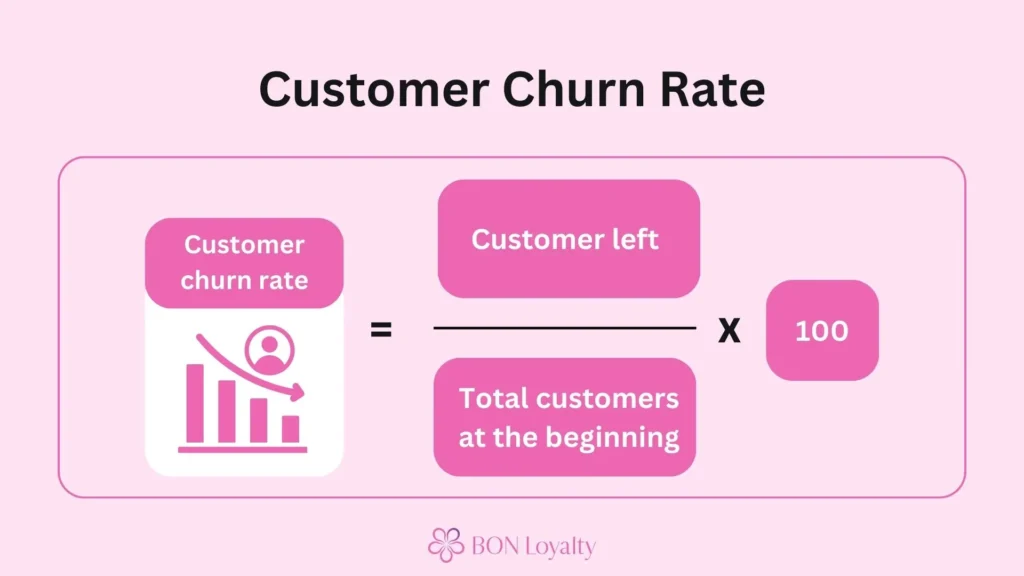
According to the Statista Research Department, the cable and finance/credit industries have the highest customer churn rate at 25%. General retail industries have a customer churn rate of 24%. The online retail industry has a customer churn rate of 22%.
To discover issues causing churn, perform surveys or analyze consumer behavior. To keep consumers engaged, provide great customer service, special member experiences, and a frictionless purchasing experience.
For a more in-depth look at best practices for improving customer churn in loyalty programs, scroll down to read this part, “Leveraging KPI Insights For Program Optimization.”
8. Average Order Value (AOV)
Average order value (AOV) is a customer loyalty KPIs indicator that represents the average amount a consumer spends each purchase in your e-commerce site.
Here is calculating the AOV formula:
| Average Order Value = Total revenue / Number of orders taken |
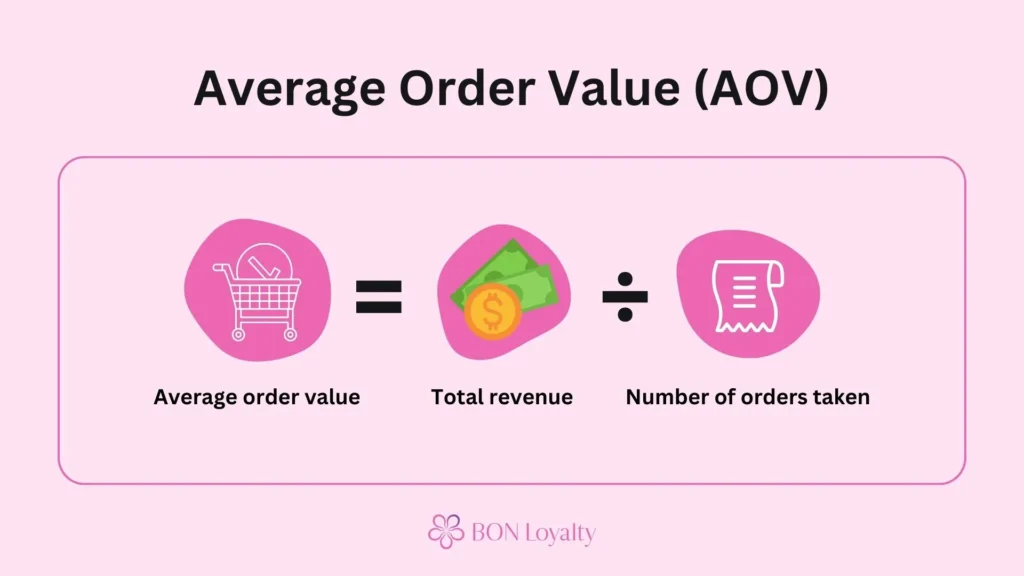
As an example, the Average Order Value would be $50 ($50,000/1,000) if a monthly e-commerce shop made $50,000 from 1,000 orders.
By analyzing AOV, you might find ways to make your loyalty programs, product deals, and price strategies better so that customers will spend more.
9. Redemption Rate
The redemption rate, one of your customer loyalty KPIs, indicates how often participants in your program exchange their accumulated points, or rewards.
| Redemption Rate = (Number of Points/Rewards Redeemed / Total Number of Points/Rewards Earned) |
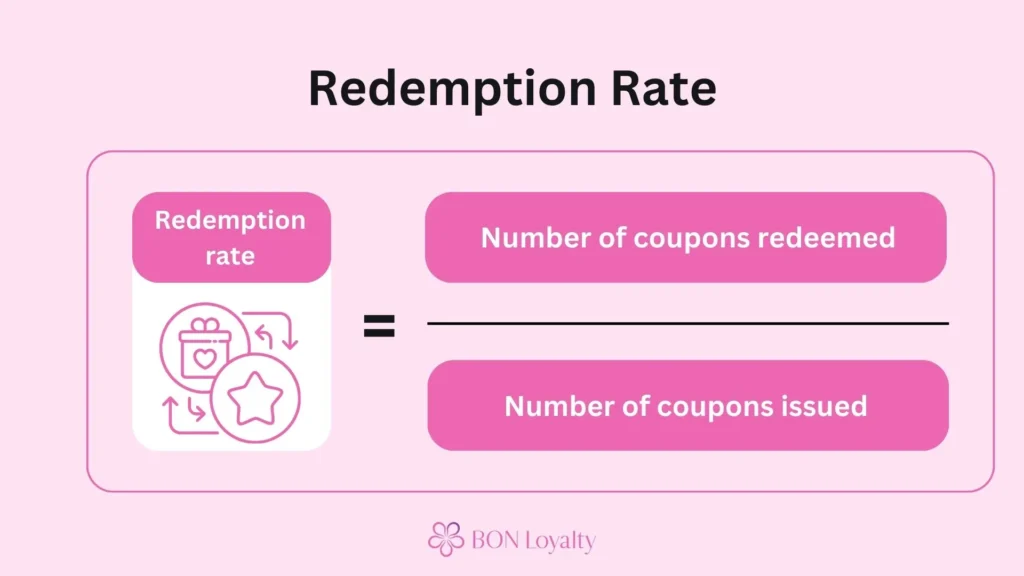
Do you want to see more members cash in their rewards? Run targeted promos or provide extra points at specified times. People will be more likely to use their deals before they end if they feel like they need to act quickly.
Read on for some helpful hints on how to increase your redemption rate.
10. Net Promoter Score (NPS)
The Net Promoter Score (NPS) shows how loyal your customers. In essence, it displays their likelihood of being your personal cheerleader.
NPS is determined using a single survey question. For instance: “On a scale of 0-10, how likely are you to recommend our company to a friend or colleague?” .

Read more: A guide to using net promoter score (NPS) for loyalty program measurement.
For instance, the most recent estimates say that Tesla’s Net Promoter Score is 97. That means that almost all of this company’s customers are supporters. Less than 2% are passives and haters.
According to Forrester Research, top brands in many industries (airlines, auto/home insurance, mass-market automakers, credit cards, health insurers, and retailers) tend to keep their positions. Besides, this stability hides a tendency. Many big companies have seen large decreases in their NPS ratings.
Taking Action: Leveraging KPI Insights For Program Optimization
You have effectively tracked your most significant customer loyalty KPIs and gained valuable knowledge about the operation of your program. However, the adventure is far from over. The crucial next step is to use those insights in real-world settings.
Identifying Areas For Improvement
1. How To Improve Customer Acquisition and Retention?
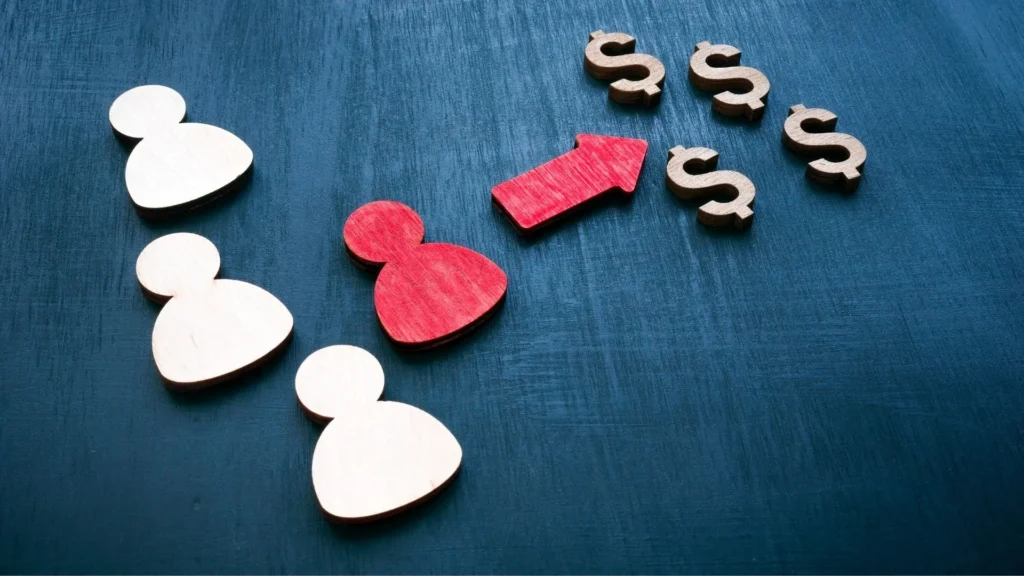
How to reduce Customer Acquisition Cost (CAC)?
Solution: Analyze customer demographics and buying behavior to target the right audience with the right marketing channels.
How to increase customer lifetime value (CLV)?
Solutions:
- Loyalty Program Gamification: Use gamification elements like points, badges, or leaderboards to make the loyalty program more engaging and encourage repeat purchases.
- Community Building: Foster connection amongst consumers via forums, social media groups, or private member events.
Read more: How can you increase the lifetime value of a Shopify customer?
How to reduce Customer Churn Rate?
Some churn reduction strategies:
- Identify Causes of Churn: Conduct surveys, examine customer behavior, or conduct exit interviews to learn why customers quit. Common factors include poor value, customer service, excessive costs, and difficult shopping experiences.
- Tailored Retention tactics based on the causes of churn. This might entail giving incentives to regain consumers, fixing products or services, or enhancing communication.
These are just a few methods for encouraging repeat purchases. See 10 Proven Shopify Tips for Customer Retention for a more in-depth analysis of a winning approach.
2. How To Enhance Customer Engagement And Average Order Value (AOV)?
How to Increase Customer Purchase Frequency?
Solutions: Offer exclusive rewards, such as early product access, personalized shopping, and unique pricing.
How to increase Average Order Value and Redemption Rates?
Solutions:
- Rewards are tiered depending on order value.
- Free delivery thresholds.
Learn about the 3 most innovative loyalty programs to increase AOV with strategic loyalty program design.
3. How To Boost Customer Advocacy?
How to improve the Net Promoter Score (NPS) and Program Enrollment Rate?
Solutions: Implement a referral program to leverage the positive experiences of promoters by encouraging them to refer friends and family with referral bonuses or rewards.
For instance, GymBros has a referral program that rewards the person who recruited a friend and that friend with 100 points. This gives new users a tasty reason to use GymBros and pushes current members to spread the word.
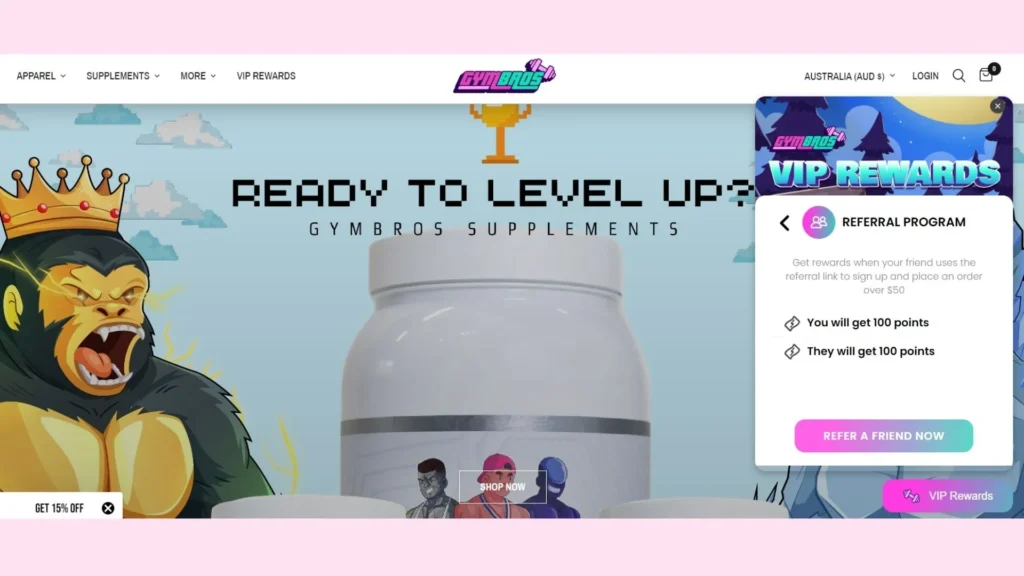
Optimizing Performance Of Customer Loyalty KPIs Using A/B Testing
Use A/B testing to compare alternative program components (rewards structure, communication techniques, tier systems) to a control group after identifying areas for improvement using customer loyalty KPIs that directly affect customer behavior and program engagement.
For example, you may compare a two-tier loyalty program to a three-tier one or customized email suggestions against generic product marketing. The adjustments should be big enough to make a clear difference while providing a consistent brand experience.
This data-driven method lets you understand what connects most with your customer, resulting in more successful program design.
Conclusion
It is now evident that employing the relevant customer loyalty KPIs to assess the efficacy of your loyalty program is crucial. These data-driven insights can guide you to success, allowing you to fine-tune your program, enhance engagement, and, eventually, establish long-term program success.
Remember, a loyalty program isn’t a “set it and forget it” approach. Regularly check your KPIs to find opportunities for improvement.
Ready to take your Shopify store loyalty program to the next level? Look no further than BON Loyalty. This is a Shopify loyalty tool that can be used to make a program that fits your business and your customers.
BON Loyalty lets you construct your program with tiers program, point systems, personalized rewards, and multilingual support.
Install the BON app now to see how we can help you create the ultimate Shopify loyalty program!
Lindsey Nguyen is a Content Marketing Specialist at BON Loyalty, specializing in digital marketing and eCommerce. At BON Loyalty, she crafts content that empowers Shopify store owners to build and sustain thriving customer relationships through innovative loyalty programs. Her articles, often featured on the BON Loyalty blog, provide valuable strategies and insights that help businesses enhance customer loyalty and increase customer lifetime value.
